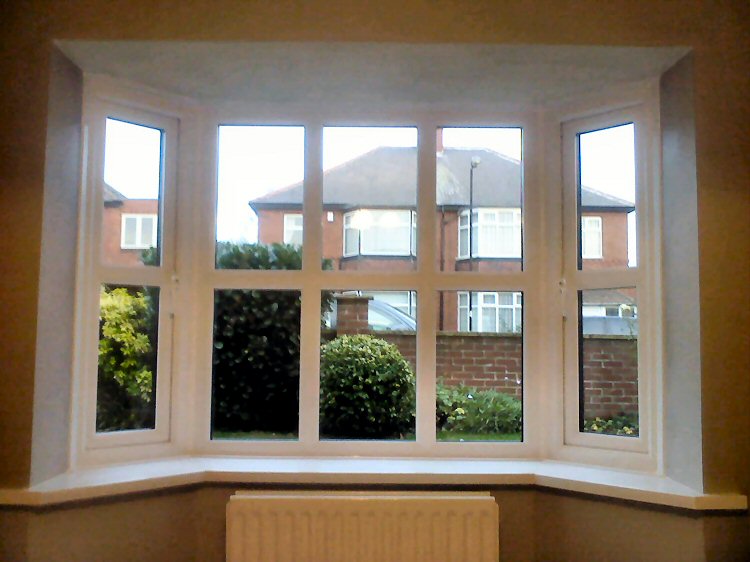Bay window
A bay window is a multi-panel window that projects outward beyond the external wall of a building. This outward projection forms a bay or interior recess and is supported by a sill height wall. Bay windows are typically rectangular or polygonal, and the most common internal angles are 90°, 135° and 150°.
Bay windows are a prominent feature of Victorian domestic architecture but were originally incorporated into designs during the English Renaissance period as a means of making a room appear larger, providing better views and admitting more natural light than a window which was flush with the wall line.
The interior recess created by a bay window can be used for storage by enclosing the lower area, or as a window seat with the addition of cushions and other soft furnishings. Alternatively, it can be used as a space to display decorative items, plants, and so on.
However, a bay window can require more heating or cooling to maintain a comfortable internal temperature due to the increased surface area of glazing. Consideration must also be given to the structural stability of the building foundations, as they must be capable of supporting the protruding windows and roof above.
In modern architecture, bay windows underwent a revival to become a characteristic feature of the Chicago School. Today, bay windows can be found in all types of domestic architecture as well as in apartment buildings.
There are several variations, including:
- Canted: A bay window with a flat front and angled sides.
- Bow: A bay window which is curved or arc-shaped.
- Oriel window: This is a bay window found on an upper floor, typically supported from below by a corbel or bracket. This type of window allows the floor space to be extended without the dimensions of the foundation needing to be changed.
- Mashrabiya: Highly decorative enclosed balconies that are characteristic of Arab architecture.
[edit] Related articles on Designing Buildings Wiki
Featured articles and news
Infrastructure that connect the physical and digital domains.
Harnessing robotics and AI in challenging environments
The key to nuclear decommissioning and fusion engineering.
BSRIA announces Lisa Ashworth as new CEO
Tasked with furthering BSRIA’s impressive growth ambitions.
Public buildings get half a million energy efficiency boost
£557 million to switch to cleaner heating and save on energy.
CIOB launches pre-election manifesto
Outlining potential future policies for the next government.
Grenfell Tower Inquiry announcement
Phase 2 hearings come to a close and the final report due in September.
Progress from Parts L, F and O: A whitepaper, one year on.
A replicated study to understand the opinion of practitioners.
ECA announces new president 2024
Electrical engineer and business leader Stuart Smith.
A distinct type of countryside that should be celebrated.
Should Part O be extended to existing buildings?
EAC brands heatwave adaptation a missed opportunity.
Definition of Statutory in workplace and facilities management
Established by IWFM, BESA, CIBSE and BSRIA.
Tackling the transition from traditional heating systems
59% lack the necessary information and confidence to switch.
The general election and the construction industry
As PM, Rishi Sunak announces July 4 date for an election.
Eco apprenticeships continue help grow green workforce
A year after being recognised at the King's coronation.
Permitted development rights for agricultural buildings
The changes coming into effect as of May 21, 2024.






















